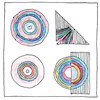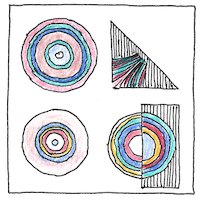Thomas Young
physics

|
Wave nature of light
In 1675, Isaac Newton had said that light consisted of particles streaming through space and he was right even though it turns out light also behaves as waves. In 1800, Thomas Young did not find the teachings of Newton sufficient but conducted a series of experiments. He demonstrated wave interference-patterns using ripples on a surface of water, and then demonstrated the same in patterns of light shining past the edges of thin cards.
Aether
In 1678, Christiaan Huygens wrote that light consisted of waves of aether. Proof of the existence of aether is the existence of light, being nothing but a vibration moving through the aether.
What is space?
A cloud of virtual particles surround an electron forming a perfect sphere. The vacuum around that sphere and around stars and planets is characterized by random appearance and disappearance of virtual particles. Einstein taught that both light and time slow down in the presence of mass —bending space itself. If space had no substance, how could gravity bend it? What the heck is it . . . other than a name we call inherently nothing?



Ultimately, at small-enough dimensions, physical effects lose the continuity that our crude senses give them. Movie frames flashed before our eyes at twenty-four frames per second seem continuous, yet the quantum nature of film is well established.
The mind cannot comprehend a substance that has simultaneous natures of both particle and wave. It is not like mixing black and white, or reducing the squares of a vast checkerboard until we cannot distinguish the pixels but see only a field of gray.
Werner Heisenberg taught that the probabilty of being in one state or the other was not resolved until we measure it. Until it hits the eye, light has a virtual existence as both particle and wave. Could the same be true of space? If virtual particles inevitably exist in the absence of particles, maybe it is the dark energy that can explain the expansion of the universe.
See also in The book of science:
Readings in wikipedia:
Other readings: